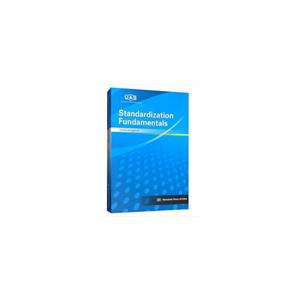
作者:李春田编著
页数:16,271页
出版社:中国标准出版社
出版日期:2020
ISBN:9787506695589
电子书格式:pdf/epub/txt
内容简介
The Soviet Union’s practice and experience of comprehensive standardization were introduced into China in the early 1980s. National Standards Bureau(NSB) explored its feasibility and has achieved success through thepilot. In 1987, State Science and Technology Commission (SSTC)issued the research task “program guided with science and technology-Comprehensive standardization” to National Institute of Standardization(NIS), aiming to develop a set of national standards through furtherpilot studies for nationwide promotion.
目录
1.1 What is comprehensive standardization
1.2 Process of comprehensive standardization
1.3 Reasons for comprehensive standardization
2 Comprehensive Standardzation inn China
2.1 From closure to introduction
2.2 Feasibility tested through pilot projects
2.3 New pilots for drafting the national standards
2.4 Untimely release of the national standards
2.5 Comprehensive standardization of the military
3 Theoretical Basis of Comprehensive Standardization
3.1 Comprehensive standardization needs theoretical guidance
3.2 Systems theory is the best choice
3.3 Methodological cornerstone of comprehensive standardization
4 General Process of Comprehensi tandardizatio
4.1 Preparation stage
4.2 Planning stage
4.3 Standards development stage
4.4 Implementation stage
Appendix to this chapter: Tips on relevant methods
5 Structure of Standards System
5.1 Standards system and its functions
5.2 Functions and structure of standards system
5.3 Modular structure of standards system
5.4 Significance of modular structure of standards system
6 Standards Complex
6.1 What is a standards complex
6.2 Types of standards complexes
6.3 Establishment of standards complex
6.4 Structure of standards complex
6.5 Characteristics of standards complex
7 Characteristics of Comprehensive Standardization
7.1 Integrity
7.2 Purpose
7.3 Complete sets of standards
7.4 Sensitivity
7.5 Whole process management (closed loop control)
7.6 Planning and Risk
8 Development Direction of Enterprise Standardization
8.1 Current issues of enterprises standardization
8.2 Make up the lesson of transformation
8.3 Driving force for transformation of enterprise standardization
9 Potential of Comprehensive Standardization in Agriculture
9.1 Standpoint for agricultural standardization
9.2 Creation of a distinctive standards system
9.3 “Precision agriculture” instead of”crazy agriculture
9.4 Agricultural production intensification–Summit for agricultural comprehensive standardization
10 Optimal Approaches for Local Standardization
10.1 Major issue addressed by the government of Dalian
10.2 Key issues affecting local economic development of Xinjiang
10.3 Strategic soil and water conservation of Shaanxi
10.4 Fujian in the south and Liaoning in the north
11 Analysis on Application Cases of Comprehensive Standardization
11.1 Comprehensive standardization of Color TV sets–Abrilliant chapter in the history of standardization in China
11.2 Comprehensive standardization of building doors and windows Creating value through coordination
11.3 Comprehensive standardization highly valued by economic associations
11.4 Comprehensive standardization system diagrams–Creation of Chinese enterprises
11.5 Comnrehensive standardization integrating quality, standards adoption and innovation
12 Practical Significance of Comprehensive Standardization
12.1 Adapting to new trends and requirements of economic and technological development
12.2 Promoting transformation of traditional enterprise management system
12.3 Revealing inevitable trend of standardization development
12.4 Promoting innovation of standardization methods
12.5 Laying foundation for development of standardization theory
12.6 Demonstrating functions and effects of standardization
13 Summary-comprehensiv Standardization is Standard~ation Systems Engineering
13.1 Comprehensive standardization raises standards to the system level
13.2 Comprehensive standardization practices the basici deas of systematoiogy
13.3 Modular structure makes standards systems dynamic
13.4 Comprehensive standardization lays methodoiogical foundation for modem standardization
节选
《现代标准化方法:综合标准化(英文版)》: Sino-Soviet relations were extremely tense in those years when comprehensive standardization was vigorously promoted in the Soviet Union, especially during the 10 years of the Chinese Cultural Revolution, the technical exchange on standardization between China and the Soviet Union was completely interrupted. We knew nothing about this major change in the standardization field of the Soviet Union. The situation had not changed until the early 1980s when the National Institute of Standardization(NIS) sent experts to the Soviet Union for investigation who brought back a lot of information, collected a batch of documentation and successively introduced standards and monographs on comprehensive stand-ardization. Many experts devoted themselves to the translation and research of comprehensive standardization literature and published the books related to comprehensive standardization. A warm atmosphere of studying comprehensive standardization arose in the standardization field at national wide. Just at that time, scien-tists represented by Qian Xuesen began to publicize and popularize systems theory, information theory and cybernetics, providing us theoretical weapons for the new era. When systems theory was applied to review comprehensive standardization, it was surprised to find very close connections and many si-milarities between the two, which further motivated the enthusiasm for the exploration and practice of comprehensive standardization. To this end, the China Association for Standardization (CAS) and the NIS jointly held a nationwide academic symposium on comprehensive standardization. ……















